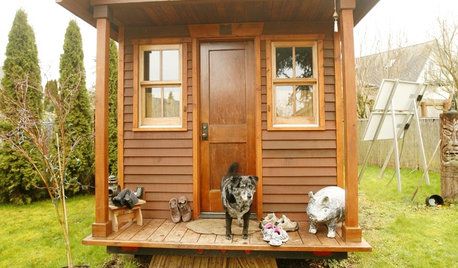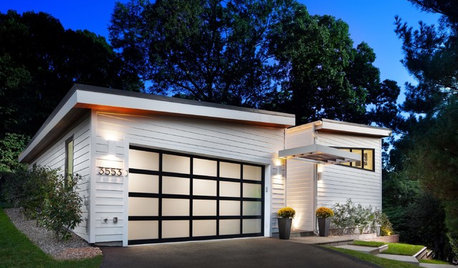Do's and Don'ts for end of year Rider Mower Storage
Rob F.
10 years ago
Related Stories

SMALL SPACESLife Lessons From 10 Years of Living in 84 Square Feet
Dee Williams was looking for a richer life. She found it by moving into a very tiny house
Full Story
MOST POPULARContractor Tips: Top 10 Home Remodeling Don'ts
Help your home renovation go smoothly and stay on budget with this wise advice from a pro
Full Story
GARDENING GUIDES15 Ideas to Try in Your Garden This Year
These gardening stories were tops among Houzz readers. Which ideas might you try this year?
Full Story
KITCHEN STORAGEStyle Your Open Kitchen Shelving Like a Pro
Follow these do’s and don’ts for arranging items on your kitchen shelves
Full Story
GREAT HOME PROJECTSHow to Make Your Garage a Storage Powerhouse
New project for a new year: Add shelving and containers to get your stuff off the garage floor — and still have room for the car
Full Story
GARAGESKey Measurements for the Perfect Garage
Get the dimensions that will let you fit one or more cars in your garage, plus storage and other needs
Full Story
MOST POPULARHow to Add a Backyard Shed for Storage or Living
Need a home office, a playspace or extra room for your stuff? Learn about off-the-shelf, prefab and custom sheds
Full Story
LANDSCAPE DESIGN15 Great Ideas for a Lawn-Free Yard
End the turf war for good with hardscaping, native grasses and ground covers that save water and are easier to maintain
Full Story
STUDIOS AND WORKSHOPSRoom of the Day: A Former Garage Hits a High Note
Remodeling turns a hodgepodge storage space into a welcoming music room — just in time for a family wedding
Full Story
STORAGEMan Space: A Guy Likes a Nice Closet, Too
If clothes make the man, shouldn't a man make a great space for the clothes? Take inspiration from these dream closets for dudes
Full Story





tomplum
wheely_boy
Related Professionals
Surprise Landscape Architects & Landscape Designers · Maple Valley Landscape Contractors · Belmont Landscape Contractors · Concord Landscape Contractors · Fuquay-Varina Landscape Contractors · Hicksville Landscape Contractors · Hurricane Landscape Contractors · Ramsey Landscape Contractors · Welby Landscape Contractors · Brighton Window Contractors · Coral Gables Window Contractors · Morton Grove Window Contractors · Sebring Window Contractors · Sugarland Run Window Contractors · Sunrise Window Contractorsbill_kapaun
rcbe
krnuttle
ewalk
exmar zone 7, SE Ohio
ewalk